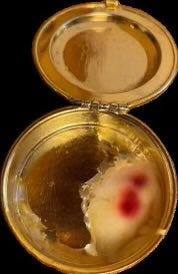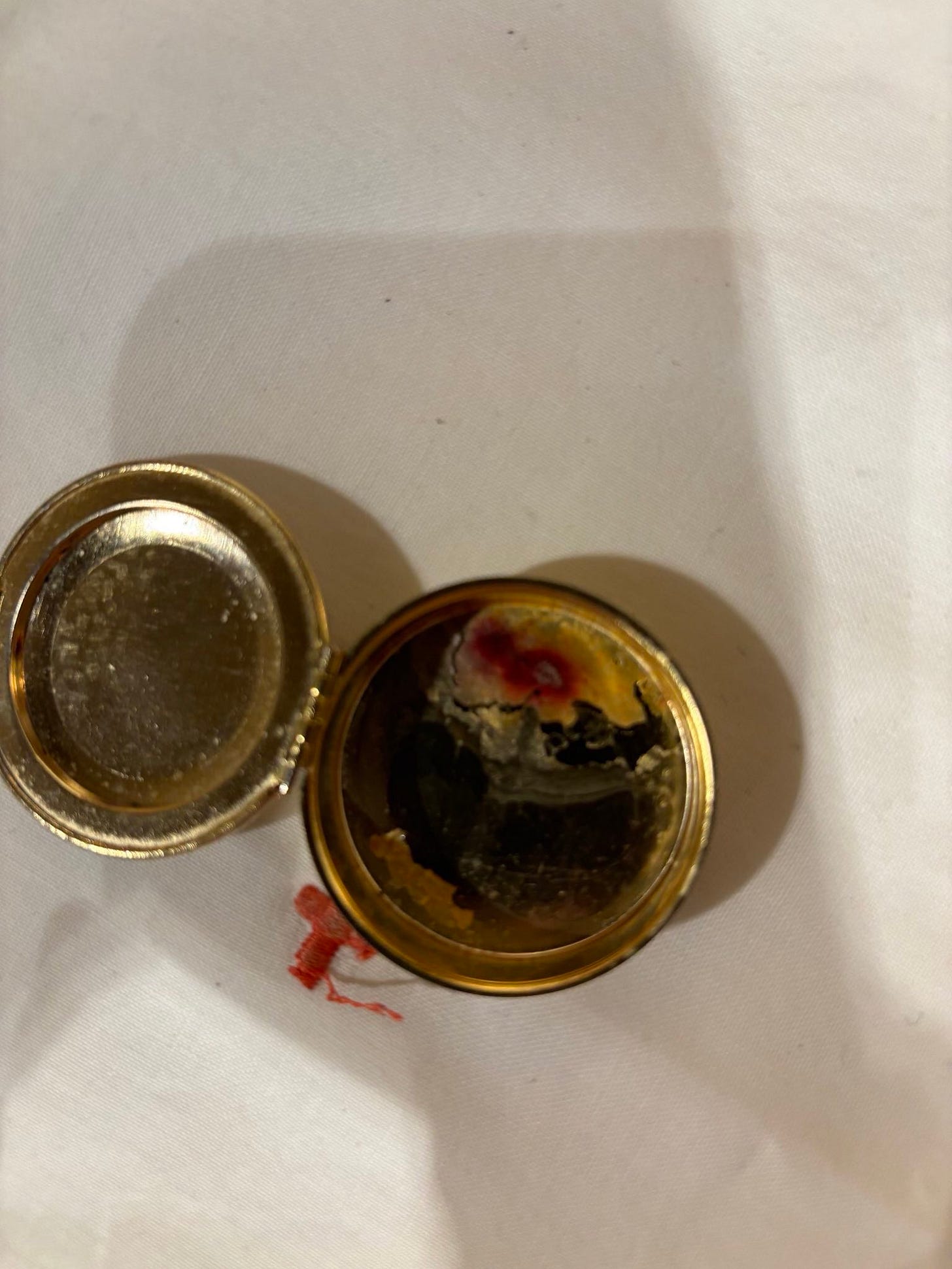It's mold, not a miracle: The Catholic Church’s latest eucharistic blunder
Another viral Catholic miracle turns out to be just bacteria and wishful thinking
This newsletter is free, but it’s only able to sustain itself due to the support I receive from a small percentage of regular readers. Would you please consider becoming one of those supporters? You can use the button below to subscribe to Substack or use my usual Patreon page!
Once again, after suggesting a miracle had occurred and there was tangible proof, an investigation has discovered… that there was a perfectly sensible, scientific, non-miraculous explanation for it.
About a month ago, an X/Twitter account posted a story involving a “Eucharistic Miracle” at St. Anthony of Padua in Morris, Indiana. The account relayed a story a woman had just sent to her family, explaining that a consecrated communion wafer had accidentally been dropped on the floor. Instead of throwing it away, a priest put it in water and "left it in the tabernacle to dissolve.” He did the same thing to a second wafer that dropped later.
When a staffer went to check on those wafers the next day to see if they had dissolved, there were “spots of blood!” The woman added: “When I saw it today it looked like a very very thin piece of skin with blood on it.”
The implication there is that this silly Catholic belief—that a consecrated wafer literally becomes the body of Christ—is true because there’s no other way the wafer could get bloody.
There were even pictures of this supposed miracle:
If you’re not convinced… well, you’re not alone. But the Archdiocese of Indianapolis took it seriously enough that they sent the wafer off to a lab to be studied:
“The Archdiocese of Indianapolis is aware of a reported occurrence that took place at St. Anthony Catholic Church in Morris, Indiana. A careful investigation, with assistance from a professional laboratory, is in progress,” a representative for the archdiocese said in a statement shared with CNA.
Ooooh. A careful investigation at some unnamed lab. What could they possible discover…?
The answer, as you may have already guessed, is nothing.
There was no evidence of a miracle. There was no evidence that the red splotches were blood. We already knew that because every time Catholics think there’s a miracle like this involving the eucharist, there’s always a natural explanation for it.
In 2012, in Minnesota, when something like this happened, they found out the red stains were… the result of mold.
"Exhaustive biological analysis by an independent scientific laboratory has determined that the reddish coloration on the Holy Communion host fragment that was kept in a water solution after it was discovered on the floor of St. Augustine Church ... was caused by a fungus. The host in question has been disposed of in a manner prescribed by church law.
In 2015, in Utah, when something like this happened, they found out the red stains were… the result of mold.
In November of 2015, it was alleged that a consecrated host (communion bread wafer) from Saint Francis Xavier Church in Kearns, Utah, appeared to be bleeding. A thorough investigation has concluded that the host did not bleed, but the change of appearance in the host was due to red bread mold. The consecrated host has been disposed of in a reverent manner, as is required.
Specifically, the red mold is caused by bacteria called Neurospora cressa or Serratia marcescens. That’s what happens when you store a wafer in a damp place. It’s fairly common.
So what happened in Indianapolis?
The lab results came back… and it was mold, as the Archdiocese explained:
A biochemical analysis of a host from St. Anthony Church in Morris that was displaying red discoloration in February revealed the presence of a common bacteria found on all humans. No presence of human blood was discovered…
… The results indicate the presence of fungus and three different species of bacteria, all of which are commonly found on human hands.
Shocking. Who could’ve guessed. (Besides anyone with a basic understanding of science.) Church members’ ignorance has never produced an actual miracle. While it’s nice that the Archdiocese got a scientific lab to look into this matter, a bright grade-schooler could’ve accomplished the same damn thing.
Never confuse mold for a miracle. Especially not after so many others before you have made the same mistake.
This non-revelation comes a year after the Vatican issued new guidance on how to decide whether or not something is a miracle. While bishops once had unilateral authority to claim something was a miracle, the new guidance said supposed miracles now had to go through the “Dicastery for the Doctrine of the Faith” first. It basically added an additional useless step to decide if a magic trick was the result of magic or a trick. Spoiler: It’s always a trick.
(At least this incident isn’t nearly as embarrassing as the Connecticut priest who, in 2023, began placing consecrated wafers in people’s mouths… only to realize later that his bowl of wafers was still full. Was God multiplying in real time, or was someone topping off the bowl when he wasn’t looking? I guess we’ll never know.)
Let’s suppose, however, that all of this was real.
That the wafer really did reveal the body of Christ.
If that happened… it would arguably be an even bigger mark against Catholicism. Because of all the miracles God could have performed, this is what He chose to do?
Kids are dying from gun violence. Cancer wards still exist. Democracies are facing existential crises around the world. But God made His presence known by turning an unused wafer slightly red?! Why would anyone ever want to worship a God who has the power to perform miracles yet only chooses the least consequential ones?
The idea that anyone spent time investigating this non-event is a damning indictment of the Catholic Church’s priorities.




Their evidence was...wafer thin.
𝑁𝑒𝑣𝑒𝑟 𝑐𝑜𝑛𝑓𝑢𝑠𝑒 𝑚𝑜𝑙𝑑 𝑓𝑜𝑟 𝑎 𝑚𝑖𝑟𝑎𝑐𝑙𝑒.
The closest connection mold has to miracles is when Fleming discovered that certain mold killed a lot of bacteria. But that's just science.